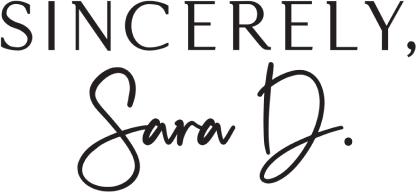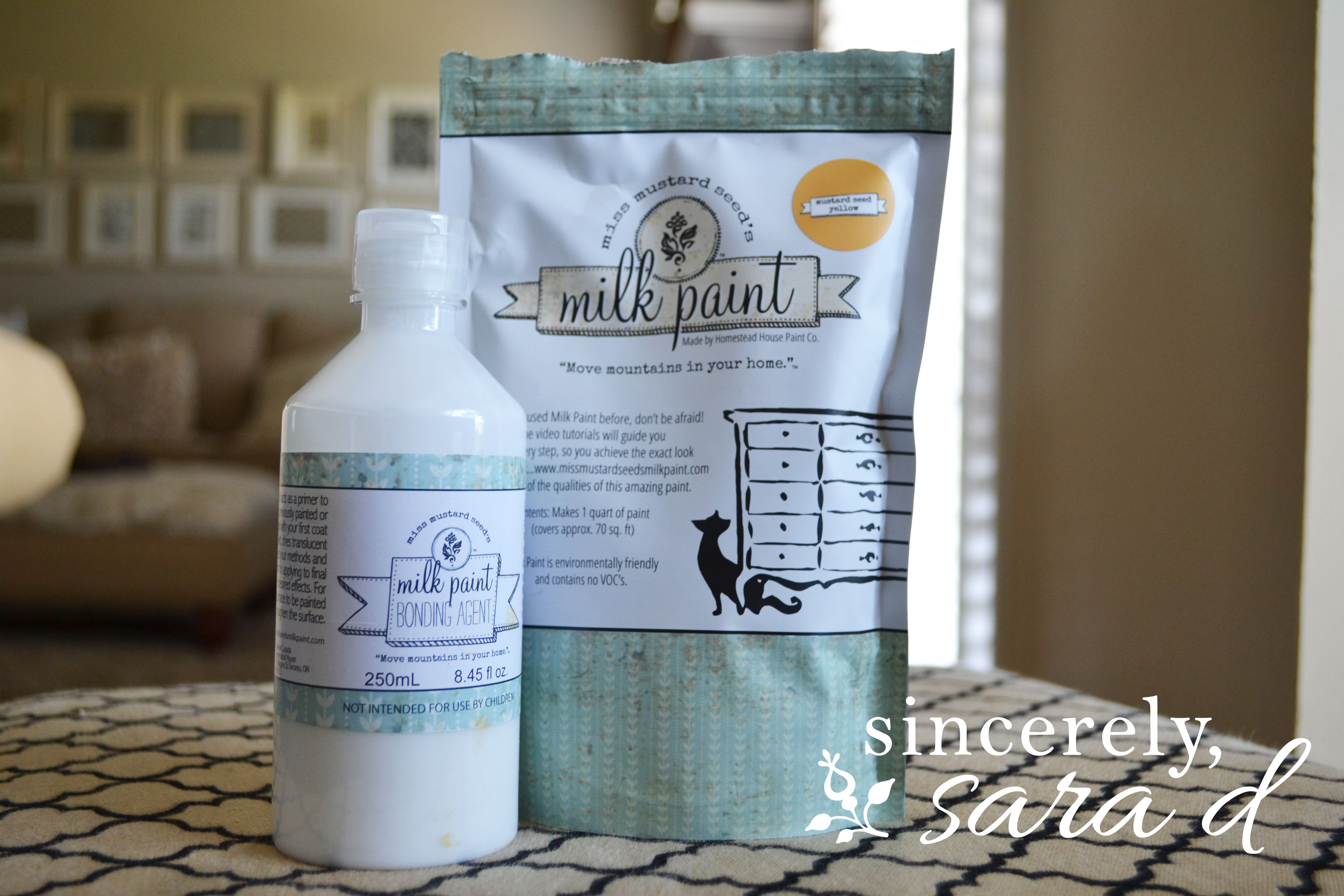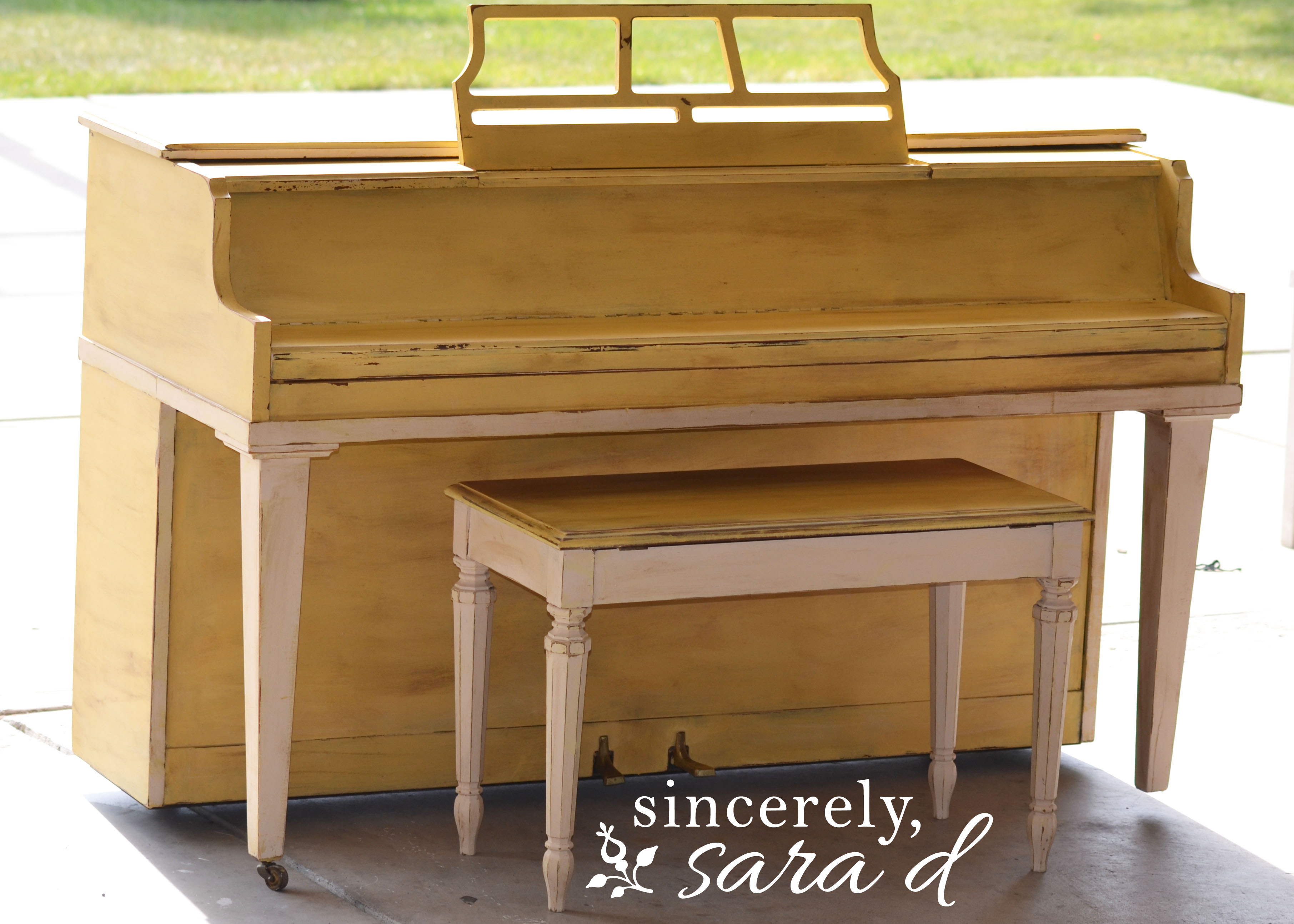
Today we’re continuing our Painting Furniture Tutorial Series with milk paint!
I have a love/hate relationship with milk paint. I love it for the fact that it does not require any prep work, and it provides a beautiful dimension. Also, if you paint raw wood, milk paint will soak in and act more like a stain.
However, my control-freak self can’t handle how unpredictable it can be if you paint a piece that has an existing finish because it has the tendency to chip, and it is hard to control. Milk paint comes in powder form, and as I just mentioned, provides various beautiful results since it reacts to different surfaces in both color and adhesion. Because it is made from natural pigments, milk paint has a beautiful dimension and can leave lighter and darker streaks. Also, milk paint will soak into wood (which is why it’s so durable), but it will react completely differently to a piece that already has a finish. If a finish exists on a piece and milk paint is added, there’s a good chance it will chip off. There is good news for all of us control freaks: If you don’t love the chippy look and are painting a piece with an existing finish, you can add a bonding agent. A bonding agent is sold separately from chalk paint and usually added to paint. Chipping can still occur with the bonding agent – but not to the same extent as it would without.
Step One: Mix
Milk paint requires mixing. It comes in powder form which is great because it has an indefinite shelf life. However, once mixed the paint needs to be used fairly quickly. To mix, you add one part powder to one part paint. You can add more powder (or water) to get the consistency you prefer. Allow the paint to sit for a bit to allow the clumps to absorb water and help the bubbles to go away. Keep in mind that you will need to occasionally mix the paint from time to time since the powder will try and settle at the bottom.

Step Two: Paint
Milk Paint doesn’t require prep work before you paint – no sanding or priming! Milk paint is thin and drips pretty easily. Use quick strokes and try to stay on top of the drips. Wait for the coats to dry before adding another. I usually do 3 coats of milk paint.

Step Three: Sand
After you’re done painting, you can sand the piece. Sanding is great if you want to distress and smooth out the finish (you’ll notice some powder lumps). If you have a lot of chipping, you’ll want to smooth out these areas.

Step Four: Wax
I use wax on my milk-painted pieces, but you can also use a polycrylic or oil. I would suggest a polycrylic for highly uses pieces such as cabinets or desks. Hemp oil is great because it’s food-safe.

Step Five: Buff
Buff the wax using a lint-free cloth. It’s pretty easy to see where you missed with the wax, so you can touch up those places with the brush or cloth. Buffing helps smooth out and remove extra wax.

You can also see the more basic tutorials in my Painting Furniture Tutorial Series by clicking HERE.
Still want more tutorials and information on painting furniture with chalk-type paint, milk paint, spray paint, latex paint, and oil-based paint? Then you need to check out my eBook, Painting Furniture. Sign up for my newsletter to receive your FREE copy.
Go create something!

Are you new to my blog? Go HERE to see my home tour and HERE to shop for items I use in our home.











